Don't wanna be here? Send us removal request.
Text
Week 10 - Digital Citizenship and Conflict: Social Media Governance
Understanding Online Harassment
Online harassment, encompassing a range of abusive behaviors facilitated by technology platforms, poses significant challenges to digital citizenship and conflict resolution (Fladmoe & Nadim, 2017). Gender-based online harassment, in particular, is a pressing concern, with women often disproportionately affected by various forms of abuse (Lenhart et al., 2016). Despite the prevalence of online conflicts, efforts to combat harassment are underway, leveraging technologies such as natural language processing and machine learning algorithms for detection and mitigation (Hosseini et al., 2017).
Exploring Gender Disparities in Online Harassment
Contrary to common perceptions, research suggests that women are not inherently more likely than men to face online harassment overall (Nadim & Fladmoe, 2019). However, significant gender disparities emerge concerning the types of harassment encountered, with women experiencing more sexualized forms of abuse compared to men (Bartlett et al., 2014). While factors beyond gender, such as political ideology and online behavior, influence exposure to harassment, women are disproportionately targeted based on their gender identity traits (Nadim & Fladmoe, 2019).
Challenges in Digital Citizenship
Digital citizenship, encompassing responsible and secure internet usage, is vital in addressing online conflicts and fostering positive online communities (Levy et al., 2022). Despite efforts to promote digital literacy, online safety, and polite behavior, conflicts persist due to various factors, including misconceptions, disagreements, and individual goals (Levy et al., 2022). Online harassment, ranging from flaming to doxing, poses significant challenges to digital citizenship, with women often bearing the brunt of more serious violations (Lenhart et al., 2016).
Combatting Online Harassment
Technology companies are actively developing solutions to combat online harassment, employing natural language processing and machine learning algorithms for automatic detection and avoidance (Hosseini et al., 2017). Initiatives like the Perspective Project, utilizing machine learning models to assign toxicity scores to text, aim to provide real-time feedback and speed up moderation, contributing to a safer online environment (Hosseini et al., 2017).
Reference
Ash, TG 2017, Free speech: ten principles for a connected world, Atlantic Books, London.
Bartlett, J, Norrie, R, Patel, S, Rumpel, R & Wibberley, S 2014, 'Misogyny on Twitter', apo.org.au.
Blackwell, L, Dimond, J, Schoenebeck, S & Lampe, C 2017, ‘Classification and Its Consequences for Online Harassment’, Proceedings of the ACM on Human-Computer Interaction, vol. 1, no. CSCW, pp. 1–19.
Bruns, A 2005, Gatewatching: collaborative online news production, P. Lang, New York.
Duggan, M. (2017). 'Online Harassment 2017'. Pew Research Center: Internet, Science & Tech. Available at: https://www.pewresearch.org/internet/2017/07/11/online-harassment-2017/#:~:text=Around%20four%2Din%2Dten%20Americans [Accessed 22 Mar. 2024].
Fladmoe, A., & Nadim, M. (2017). 'Silenced by hate? Hate speech as a social boundary to free speech'. In A. H. Midtbøen, K. Steen-Johnsen, & K. Thorbjørnsrud (Eds.), Boundary struggles: Contestations of free speech in the public sphere (pp. 45–75). Oslo, Norway: Cappelen.
Hosseini, H., Kannan, S., Zhang, B. and Poovendran, R. (2017). 'Deceiving Google’s Perspective API Built for Detecting Toxic Comments'. arXiv:1702.08138 [cs]. Available at: https://arxiv.org/abs/1702.08138.
Jane, EA 2012, ‘“Your a Ugly, Whorish, Slut”’, Feminist Media Studies, vol. 14, no. 4, pp. 531–546.
Jane, EA 2014, ‘“Back to the kitchen, cunt”: speaking the unspeakable about online misogyny’, Continuum, vol. 28, no. 4, pp. 558–570.
Lenhart, A., Ybarra, M., Zickuhr, K. and Prive-Feeney, M. (2016). 'Online Harassment, Digital Abuse, and Cyberstalking in America'. Data & Society Institute.
Levy, S., Kraut, R.E., Yu, J.A., Altenburger, K.M. and Wang, Y.-C. (2022). 'Understanding Conflicts in Online Conversations'. Proceedings of the ACM Web Conference 2022. doi:https://doi.org/10.1145/3485447.3512131.
Nadim, M & Fladmoe, A 2019, ‘Silencing Women? Gender and Online Harassment’, Social Science Computer Review, vol. 39, no. 2, p. 089443931986551.
#mda20009
0 notes
Text
Week 9 - Gaming Communities, Social Gaming and Live Streaming
The Evolution of Gaming
The gaming industry has undergone a remarkable evolution over the past five decades, transitioning from humble beginnings to a global phenomenon (Bankov, 2019). With advancements in hardware and internet connectivity, gaming has become increasingly accessible, leading to the rise of online distribution platforms like Steam and innovative revenue streams such as loot boxes and microtransactions. This evolution has reshaped consumer experiences and revenue models, marking a departure from physical copies to digital distribution networks (Bankov, 2019).

Understanding the Culture of Gaming
Since its inception, gaming has not only evolved technologically but has also fostered a unique culture surrounding players and their communities (Fu, n.d.). While stereotypes about gamers abound, the culture of gaming encompasses diverse demographics and behaviours. Gaming communities, both online and offline, have played a significant role in transforming games from mere entertainment to true cultural phenomena (Games, 2023). Events like Gamescom and DreamHack provide platforms for gamers to connect and showcase technologies, while community movements such as MixiGaming demonstrate the positive impact of gaming communities through charitable initiatives (Games, 2023).
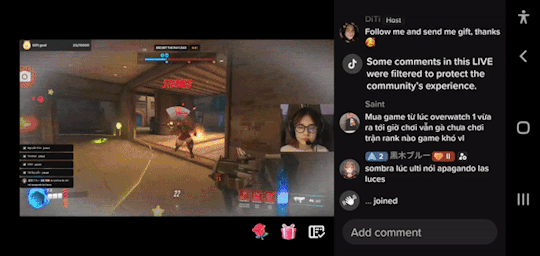
The Rise of Live-Streaming in Gaming
Live-streaming has emerged as a prominent feature of gaming culture, offering a platform for gamers to engage with audiences in real-time (Li, Wang & Liu, 2020). Platforms like Twitch and YouTube Gaming have experienced exponential growth, with millions of regular visitors tuning in to watch streamers play and interact. Live-streaming not only fosters community building but also serves as a lucrative market for streamers, contributing to the development of the gaming industry (Li, Wang & Liu, 2020).
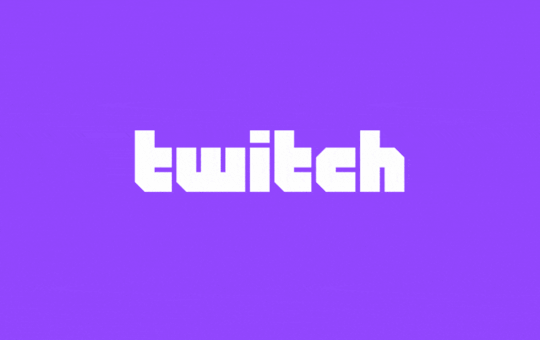
The Integration of Social Media and Gaming
The merging of gaming and social media has revolutionized both industries, enhancing connectivity and reshaping consumer experiences (Kerr, 2019). From early multiplayer platforms to modern communication hubs like Discord, social interaction has become central to gaming. Integrating platforms like Twitter and Twitch has transformed marketing and content sharing, while live-streaming sessions have contributed to the formation of gaming communities (Kerr, 2019). As technology continues to advance, this synergy is expected to deepen, offering new opportunities for community engagement and interactive experiences.
In conclusion, the convergence of gaming and social media has ushered in a new era of connectivity and innovation, transforming how games are played, shared, and experienced. As gaming culture continues to evolve, it is essential to recognize the diverse demographics and behaviours within the gaming community, while leveraging platforms like live-streaming to foster positive interactions and community building. By embracing the intersection of gaming and social media, we can unlock new avenues for creativity, collaboration, and enjoyment in the digital landscape.
References
Bankov, B. 2019, The impact of social media on video game communities and the gaming industry, University of Economics in Varna, Varna.
Ellington, H, Addinall, E & Percival, F 1986, A handbook of game design, Kogan Page, London.
Editors, H com 2017, 'Video Game History', HISTORY, viewed 21 March 2024, https://www.history.com/topics/inventions/history-of-video-games#modern-age-of-gaming.
Fu, D n.d., 'A Look at Gaming Culture and Gaming Related Problems: From a Gamer’s Perspective', viewed 21 March 2024, https://smhp.psych.ucla.edu/pdfdocs/gaming.pdf.
Games, BG 2023, 'Gaming Communities: The Rise and Impact of Gaming Communities on the World of Video Games', Medium, viewed 21 March 2024, https://bggames.medium.com/gaming-communities-the-rise-and-impact-of-gaming-communities-on-the-world-of-video-games-1fec152f649f.
Kerr, C 2019, 'Discord surpasses 250 million registered users in four years', www.gamedeveloper.com.
Li, Y, Wang, C & Liu, J 2020, 'A Systematic Review of Literature on User Behavior in Video Game Live Streaming', International Journal of Environmental Research and Public Health, vol. 17, no. 9, p. 3328.
University of Minnesota Libraries Publishing 2016, '10.2 The Evolution of Electronic Games', open.lib.umn.edu, University of Minnesota Libraries Publishing edition.
#mda20009
0 notes
Text
Week 8 - Digital Citizenship and Software Literacy: Instagram Filters
The Rise of Face Filters and AR Technology
Face filters have become an integral part of social media engagement, providing users with a tool for digital self-expression and enhancement of their online presence. Initially simple overlays for selfies, these filters have evolved into complex AR tools with interactive effects, beauty filters, and augmented reality masks (Javornik et al., 2022). Platforms like Snapchat and Instagram have embraced these filters, offering users a wide array of options to modify their appearance in real-time.
Augmented Reality Filters: A New Dimension
The advent of AR filters represents the next phase in face filter technology, offering dynamic and interactive experiences that respond to users' motions and surroundings (Bhatt, 2020). Unlike static overlays, AR filters immerse users in virtual environments, creating engaging animations and virtual reality experiences. With the democratization of filter production through platforms like Spark AR Studio, users and brands alike have seized the opportunity to create personalized and creative filters tailored to diverse tastes and preferences.
The Impact on Identity and Self-Image
While face filters offer a fun way to enhance images and videos, concerns have arisen regarding their impact on identity and self-perception (Kumar & Madhushree Nanda Agarwal, 2023). Critics argue that these filters propagate unrealistic beauty standards, fostering feelings of inadequacy and body dissatisfaction among users. Moreover, the blurring of lines between reality and digital alteration raises questions about authenticity and genuine self-representation in online interactions.
Navigating the Future of Face Filters
As technology continues to advance, the potential for innovation in face filters remains boundless (Sofija, 2022). From AI-powered filters to seamless integration with virtual and augmented reality experiences, the future holds exciting possibilities. However, it is imperative to approach the evolution of face filters with a critical lens, considering their implications for social interaction, identity formation, and self-perception. Balancing authenticity with innovation is crucial as we navigate the evolving landscape of digital self-expression.
Addressing Challenges and Promoting Responsible Use
While AR filters offer immense potential, they also present challenges related to unrealistic beauty standards and distorted self-image perceptions (Scott, 2019). Social media developers must prioritize user well-being by carefully curating filters and providing educational resources on healthy filter usage. Additionally, fostering awareness and self-reflection among users can promote mindful engagement with filters, encouraging them to prioritize genuine self-expression over unrealistic standards.
In conclusion, the evolution of face filters, particularly with the introduction of AR technology, has revolutionized digital self-expression. However, it is essential to consider the societal implications and psychological effects of these filters, emphasizing responsible use and promoting authentic online interactions. By striking a balance between innovation and mindfulness, we can harness the potential of face filters to enhance digital experiences while nurturing positive self-image and identity formation.
References
Javornik, A, Marder, B, Barhorst, JB, McLean, G, Rogers, Y, Marshall, P & Warlop, L 2022, ‘“What lies behind the filter?” Uncovering the motivations for using augmented reality (AR) face filters on social media and their effect on well-being’, Computers in Human Behavior, vol. 128, no. 107126, p. 107126.
Kumar, H & Madhushree Nanda Agarwal 2023, ‘Filtering the reality: Exploring the dark and bright sides of augmented reality–based filters on social media’, Australian Journal of Management, SAGE Publishing, pp. 1–21.
Scott, D 2019, Instagram has banned a load of its most popular filters, Cosmopolitan.
Sofija, E 2022, What are augmented reality (AR) filters and how are they transforming the way consumers engage with brands?, www.linkedin.com, viewed 18 March 2024, https://www.linkedin.com/pulse/what-augmented-reality-ar-filters-how-transforming-way-emma-sofija/.
#mda20009
0 notes
Text
Week 7 - Digital Citizenship and Health Education: Body Modification on Visual Social Media
The history of body modification
Body modification is a practice with a long history across many cultures as a means of self-expression and representation of one's identity (Lane 2020). However, in modern times, the conversation around altering one's appearance has significantly expanded through online platforms. Social media sites have become virtual galleries where individuals proudly display modifications like tattoos, piercings and cosmetic procedures while curating aesthetically pleasing self-presentations. This visibility labour sees users engaging in self-promotion to garner large followers and perceived online influence. Celebrities in particular have capitalized on their ability to set aesthetic templates for others to follow (Warhurst & Nickson 2020).
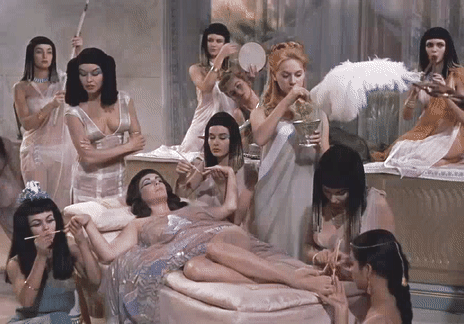
Curating online personas
On sites like Instagram, popular "Instagramers" have crafted highly stylized feeds focusing on certain body parts or activities aligned with prevailing templates of masculinity and femininity. For women, this often emphasizes an enhanced hourglass figure with a tiny waist, prominent bust and bottom, and facial features through posed photographs. Specific poses emphasise the curvature of the hips and backside while slimming the midsection. Men likewise showcase chiselled, hairless physiques with well-defined six-pack abs, broad shoulders, and muscular arms and legs during athletic feats or casual modelling shots (Wohlrab et al. 2009; Ellis 2015).

Establishing aesthetic norms
The proliferation of these templates, increasingly influenced by health, fitness and cosmetic surgery influencers, has contributed to a body image crisis for some impressionable users (Timko & Cooper 2022). Individuals experience feelings of inadequacy, low self-esteem and body dysmorphia when comparing their actual bodies to the seemingly flawless, surgically enhanced and heavily curated versions portrayed online (Dobson, Sarah & Robards 2018). This crisis is particularly concerning for teens and young adults who are still developing their self-identity. The templates promoted ignore the vast diversity of natural human forms and can promote unhealthy behaviours like risky procedures, steroid use or eating disorders just to achieve an unrealistic ideal.

Impacts of social comparison
While influencers have brought greater awareness to fitness and wellness, their content faces little oversight. Greater responsibility is needed from platforms and influencers themselves to educate viewers and curb the promotion of often unattainable aesthetic goals. However, digital communities also hold the power to shape social norms. Users must cultivate their online spaces with positivity, acceptance of diversity and discouragement of harmful comparison behaviours. In this way, both platforms and participants can work to mitigate potential negative impacts.
References
Dobson, A, Carah, N & Robards, BJ 2018, Digital Intimate Publics and Social Media: Towards Theorising Public Lives on Private Platforms, research.monash.edu, Palgrave Macmillan, pp. 3–27, viewed 6 March 2024, https://research.monash.edu/en/publications/digital-intimate-publics-and-social-media-towards-theorising-publ.
Ellis, JB 2015, 'Platform principles: A community-centric approach to governing online social platforms', Social Media + Society, vol. 1, no. 2, 2056305115610862.
Lane, DC 2020, "Understand body modification: A process-based framework." International Journal of Social Research Methodology, vol. 23, no. 2, pp. 171-186.
Timko, A, Cooper, M 2022, 'Body Dissatisfaction, Body Image Disturbance, Body Dysmorphia: A Primer for Providers, Caregivers and Media', policylab.chop.edu, viewed 6 March 2024, https://policylab.chop.edu/blog/body-dissatisfaction-body-image-disturbance-body-dysmorphia-primer-providers-caregivers-and.
Wohlrab, S, et al. 2009, 'Mirror, mirror on the wall, who is the most tattooed of them all?', Personality and Individual Differences, vol. 46, no. 5-6, 627-631.
#mda20009
1 note
·
View note
Text
Week 6 - Social Media Influencers and the Slow Fashion Movement
Digital Citizens
Digital citizens are adept at using digital technology to assess, create, and analyse content (Sense 2009).
According to McCosker and colleagues (2016), a digital citizen is susceptible to restrictions and power imposed by organisations, nations, and even platform registration.
What is more is that there is an augmented version of a digital citizen, which could well be linked to the title of "Social Media Influencer".
Social Media Influencers
These people have gained considerable social media reputations by establishing a set, or a community, of followers that extends beyond their personal networks and consumes their content (Booth & Matic 2011). By wielding the power of public leading, these social media influencers also bear the responsibility of understanding ethical, legal, human, cultural and social issues and thus act accordingly.
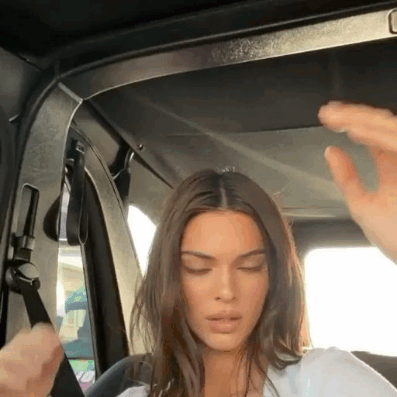
The Environmental Impact of Fashion
According to the World Economic Forum (McFall-Johnsen 2020), the fashion industry ranks amongst the highest in all fields in terms of generating environmental impact, let alone long-lasting consequences as well:
The manufacture of fashion accounts for 10% of all carbon emissions worldwide.
By 2030, it is predicted that emissions from the textile industry alone will have climbed by 60%.
The second-biggest water consumption industry is the apparel sector.
The second biggest water polluter in the world is the dyeing of textiles.
The washing of synthetic fabrics, such as polyester, contributes 35% of all the microplastics found in the water.
Large volumes of petroleum are needed in the process of turning plastic fibres into textiles, which also emits acids and volatile particulates.
The staggering environmental impact of the fashion industry, from carbon emissions and water consumption to pollution and microplastic contamination, underscores the urgent need for sustainable solutions. As a confrontation to these challenges, the rise of slow fashion emerges as a promising pathway towards mitigating these harmful effects. By prioritizing quality over quantity, embracing ethical production practices, and promoting longevity in garment lifespan, slow fashion offers a compelling alternative that aligns with ecological stewardship and social responsibility.

The Development of Slow Fashion
As mentioned earlier, the advent of slow fashion is attributed to a confronting alternative to fast fashion and can be referred to as "eco-, green-, slow- and ethical fashion".
Jung (2022) also stated that slow fashion is a movement that prioritises quality, sustainability, and ethical standards in the manufacturing and consumption of clothes. Slow fashion refers to decelerating the fashion cycle within the manufacturing and consumption cycle.
The slow fashion movement aims to achieve sustainable development by bolstering the economic, social, and environmental dimensions of the fashion industry and its production processes. Central to its mission is the enhancement of the fashion industry's supply chain, prioritizing the well-being of workers and advocating for the use of environmentally friendly resources, including renewable and recycled materials. Below are some of the prominent players (brands) in this movement

The Role of Social Media Influencers in the Slow Fashion Movement
As we have discussed the power and responsibility wielded by social media influencers to the public, it is crucial to formulate a strong relationship between them and the slow fashion movement. As they frequently provide more personal content centred around their hobbies and way of life, influencers have the potential to develop stronger psychological ties with their audience (Audrezet et al. 2020).
Influencers wield significant influence over a vast audience, making them pivotal in raising awareness about the detrimental environmental and social consequences of fast fashion. Through their platforms, they have the power to shed light on issues such as overconsumption, exploitation of labour, and environmental degradation inherent in the fast fashion industry.
Moreover, influencers can leverage their reach to advocate for ethical and sustainable fashion brands, amplifying their visibility and encouraging consumer support for businesses committed to responsible practices. By showcasing these brands and their efforts towards sustainability, influencers play a vital role in shaping consumer preferences and driving demand for ethical alternatives.
Additionally, influencers can serve as guides on the journey towards embracing slow fashion. Through their platforms, they can impart practical tips and advice on how individuals can adopt sustainable fashion practices in their daily lives. From wardrobe essentials to eco-friendly shopping habits, influencers have the ability to empower their audience to make informed choices that align with principles of sustainability and social responsibility.
References
Audrezet, A, De Kerviler, G & Guidry Moulard, J 2020, 'Authenticity under threat: When social media influencers need to go beyond self-presentation', Journal Of Business Research, vol. 117, no. 1, pp. 557-569.
Booth, N, Matic, JA 2011, ‘Mapping and leveraging influencers in social media to shape corporate brand perceptions’, Corporate Communications: An International Journal, vol. 16, no. 3, pp. 184-191.
Jung, S & Jin, Be 2022, “Slow Fashion Branding: Understanding What Consumers Value Most,” The Journal Of Brand Management, vol. 29, no. 2, pp. 141–149.
Mccosker, A, Vivienne, S, & Johns A 2016, Negotiating Digital Citizenship: Control, Contest. Culture.
McFall-Johnsen, M 2020, ‘These facts show how unsustainable the fashion industry is’, World Economic Forum, viewed 12 March 2024, .
Sense, AC 2009, Digital Literacy And Citizenship In The 21st Century, San Francisco: Common Sense Media.
#mda20009
0 notes
Text
Week 5 - What is Digital Citizenship? Hashtag Publics, Political Engagement and Activism
Digital citizenship is a concept that encompasses the abilities and expertise to use digital technology for positive social participation, communication, content creation, and consumption. With the rise of social media and communication platforms, individuals now have the opportunity to engage in public discourse and share their thoughts on various issues (Choi & Cristol 2021, p. 362). This phenomenon, known as platformization, has transformed how people interact, engage, and consume content in the digital world (Vromen 2017).
Platformization refers to the dominance of digital platforms in different aspects of our lives, including social interaction, commerce, and communication. Major platforms like social media networks, e-commerce websites, and online service providers have reshaped the way we communicate and engage with society. This shift has also brought about significant challenges related to data privacy, market dynamics, and regulatory frameworks (Helmond 2015).
Through the power of hashtags and social media platforms, individuals can connect with others worldwide, raising awareness about important events or issues. Hashtags have become a symbol of public debate and political engagement on platforms like Twitter. They serve as a rallying point for communities to come together and discuss topics of interest, such as #blacklivesmatter and #feminism (Edwards et al. 2021).
The impact of digital citizenship and platformization on politics is evident, as seen in the 2016 US election. Social media played a crucial role in reaching younger voters and conveying campaign messaging. Political parties now prioritize authenticity, recognizing the influence of social media on public opinion. The emergence of digital citizenship has altered the way we engage with politics, allowing politicians to utilize digital platforms to their advantage (Enli 2017).

While platformization has brought numerous benefits, the platform economy has a darker side. Big tech platforms often dominate markets, controlling platform producers and owners. This can create challenges for smaller players relying on larger platforms for distribution and user access. For instance, in the music streaming market, Spotify competes with Apple Music but has to navigate Apple's App Store, which gives Apple a competitive edge.
References
Choi, M & Cristol, D 2021, ‘Digital Citizenship with Intersectionality Lens: Towards Participatory Democracy Driven Digital Citizenship Education’, Theory Into Practice, vol. 60, no. 4.
Edwards, E, Ford, S, Gajjala, R, Murray, PR & Bhatia, KV 2021, ‘Shaheen Bagh: Making sense of (re)emerging “Subaltern” feminist political subjectivities in hashtag publics through critical, feminist interventions’, New Media & Society, vol. 26, no. 1, pp. 3–165.
Enli, G 2017, ‘Twitter as arena for the authentic outsider: exploring the social media campaigns of Trump and Clinton in the 2016 US presidential election’, European Journal of Communication, vol. 32, no. 1, pp. 50–61.
Helmond, A 2015, ‘The Platformization of the Web: Making Web Data Platform Ready’, Social Media + Society, vol. 1, no. 2, pp. 1–11.
Vromen, A 2017, Digital Citizenship and Political Engagement, Palgrave Macmillan UK, London.
#mda20009
0 notes
Text
Week 4 - Digital Community and Fandom: Reality TV Case Study
Reality TV has become a prominent genre that captivates audiences with its authenticity and relatability. It forms a digital community where viewers connect through social media platforms such as Twitter, creating a vibrant online ecosystem centered around their shared enjoyment of the show.
Through hashtags and real-time interactions, Twitter enables viewers to share their thoughts, reactions, and predictions as the show unfolds, fostering a sense of community and excitement among fans. This collaborative participation not only enhances the viewing experience but also contributes to the show's overall popularity and durability (Deller 2019).
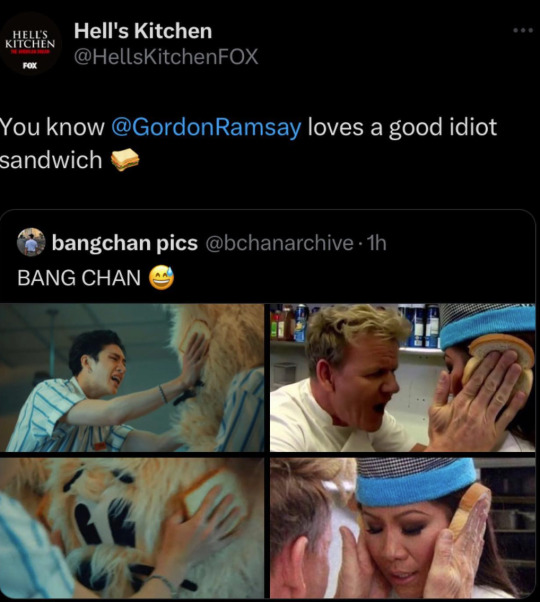
However, there are concerns regarding the authenticity of reality TV, as some viewers question the reflection of human behavior and interactions in these shows. The realism and intimacy presented in reality TV can sometimes be distorted to capture audience attention, leading to debates about the genuine nature of the situations portrayed (Deller 2019).
The popularity of reality TV and its integration with social media platforms like Twitter has revolutionized the way viewers engage with the shows. Rather than being passive spectators, viewers have become active participants, contributing to the creative process through comments, votes, and sharing opinions. This dynamic interaction has created an open and collaborative environment, blurring the lines between producers and consumers of television content (Baym 2007).

Despite these concerns, the impact of reality TV on society and individuals cannot be denied. reality TV reflects our regression as a society, highlighting the influence of charming individuals, self-loving narcissists, and the peculiar situations they often choose to inhabit (Lindemann 2022). It has transformed the landscape of celebrities, politics, and power, shaping our world for both better and worse. The portrayal of certain personalities and situations can perpetuate harmful stereotypes and promote questionable values. It is crucial for viewers to critically analyze and question the content they consume, distinguishing between entertainment and reality.
In conclusion, reality TV forms a digital community where viewers engage in real-time discussions and interactions through social media platforms like Twitter. While there are concerns about the authenticity of these shows, their impact on society and individuals is undeniable, shaping our perceptions of celebrities, politics, and power. By actively participating in the viewing experience, viewers become content producers, contributing to the creative process and shaping the future of reality TV.
Reference
Baym, NK 2007, ‘The new shape of online community: The example of Swedish independent music fandom’, First Monday, vol. 12, no. 8.
Deller, RA 2019, Reality Television: The Television Phenomenon That Changed the World, Emerald Publishing Limited.
Lindemann, DJ 2022, True story: what reality TV says about us, Farrar, Straus and Giroux, New York.
#mda20009 #swinburne
0 notes
Text
Week 3 - Tumblr Case Study
So first of all, what does 'digital community' even mean?
A. Ant Ozok and Panayiotis Zaphiris (2009, p. 14) define a digital community as a collection of people who connect with one another and exchange ideas and information primarily via digital platforms and online channels.
From that point, how does Tumblr function as a digital community?
Tumblr serves as a digital community, allowing users to produce and share various material, encourage engagement, and promote privacy and anonymity (Tiidenberg & Gómez Cruz, 2015). Tumblr focuses on creative self-expression, allowing users to share brief messages, GIFs, videos, images, and text to express themselves and connect with others. Using hashtags helps users find similar information, connect with others, and build communities around certain topics of interest (Hillman, Procyk, & Neustaedter 2014).
Tumblr's unique characteristic is its content flexibility, allowing users to express themselves artistically and personally. Tumblr's reputation for innovation, independence, and sharing varied viewpoints and art stems from its freedom. Tumblr's anonymity allows users to explore their identities and share content without the constraints of real-world social relationships, providing freedom and safety in self-expression (Ogden 2022). However, Tumblr's large user base, including minors, has led to challenges in maintaining control and regulating content. In the past, the network grappled with the appearance of explicit and sensitive content, prompting the installation of stronger controls. In response to these concerns, Tumblr prohibited the uploading of sexually explicit content, resulting in the removal of over 100,000 accounts (admin_khuong 2019). Despite obstacles, Tumblr is a digital community where users share interests, engage in discussions, and enrich digital culture.
Reference
admin_khuong 2019, ‘Tumblr là gì? Những thành công Tumblr trước khi đi đến hồi kết’, Guru.edu.vn, viewed <https://guru.edu.vn/tumblr-la-gi-nhung-thanh-cong-tumblr-truoc-khi-di-den-hoi-ket/>.
Hillman, S, Procyk, J & Neustaedter, C 2014, ‘Tumblr fandoms, community & culture’, Proceedings of the companion publication of the 17th ACM conference on Computer supported cooperative work & social computing - CSCW Companion ’14.
Ogden, J 2021, ‘“Everything on the internet can be saved”: Archive Team, Tumblr and the cultural significance of web archiving’, Internet Histories, vol. 6, no. 1-2, pp. 113-132.
Ozok, AA & Zaphiris, P 2009, ‘Online Communities and Social Computing’, Lecture Notes in Computer Science, Springer Berlin Heidelberg.
Tiidenberg, K, & Gómez Cruz, E 2015, 'Selfies, image and the re-making of the body', Body & society, vol. 21, no. 4, pp. 77-102.
#mda20009 #swinburne
1 note
·
View note